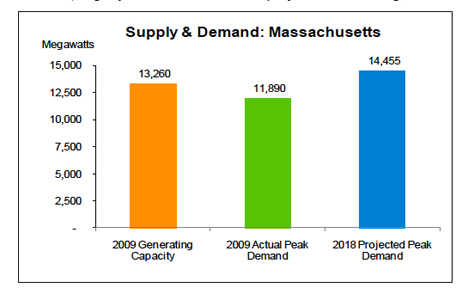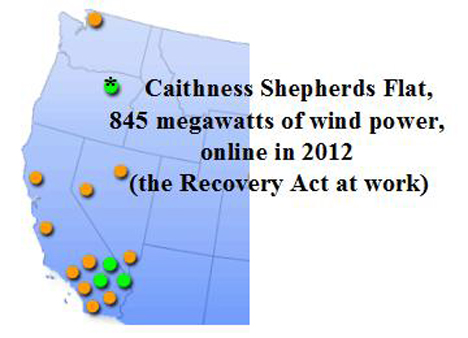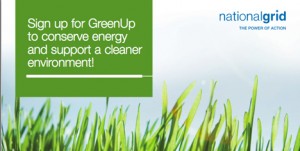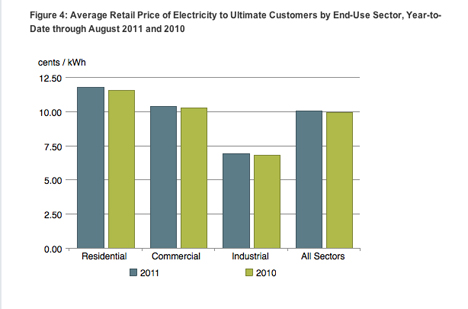Mickey Friedman
November 18, 2011
You’re not going to want to read this if you’re paying an extra penny or two a kilowatt hour to buy green electricity.
Or you think we should sacrifice our mountaintops for wind turbines because they reduce our dependence on foreign oil. Convinced we’ll burn less coal.
You’ve been told green lies. Sold green by someone who’s been paid to sell green. By the electric utilities or environmental organizations paid by the utilities or the State.
The fact is we don’t have to subsidize big wind companies like GE, Vestas, or Iberdrola, their energy consultant friends at UMASS, and the Green Cartel nonprofits to destroy open space for electricity. Because we don’t really need the electricity.
We don’t need to lose another mountain in the Berkshires. Or to turn farmland in Great Barrington into a gigantic field of solar panels.
There is still more electrical generating capacity than demand in Massachusetts.
 http://www.mass.gov/eea/docs/doer/pub-info/ma-01-2010-profile.pdf
http://www.mass.gov/eea/docs/doer/pub-info/ma-01-2010-profile.pdf
Maximize conservation. Use less electricity and use what we use more efficiently. The electric grid is notoriously inefficient. Fix it. How much energy could we save? Here’s what the experts at ABB, one of our leading energy engineering firms says: “The U.S. Department of Energy estimates that increasing energy efficiency could reduce national energy use by 10% or more in 2010, and as much as 20% in 2020, with net economic benefits for consumers and businesses as a result”. (http://www04.abb.com/global/seitp/seitp202.nsf/c71c66c1f02e6575c125711f004660e6/64cee3203250d1b7c12572c8003b2b48/$FILE/Energy+efficiency+in+the+power+grid.pdf)
Just to be clear: solar energy and wind power does not replace the coal- or natural gas-produced electricity we need right now. It’s intermittent and unreliable. Baseload electricity – the electricity that has to be present all the time for factories to run and for you to use your refrigerator – requires production of electricity 24/7. So until we increase efficiencies we are going to need to use coal and natural gas and nuclear.
Only 30-35% of the energy in coal ends up as electricity from a traditional coal plant. Newer coal plants reach efficiency levels in the mid-40s, while integrated gasification plants reach levels above 60%. The same is true of efficient gas-fired plants.
While moving electricity we lose between 6 to 8% at an estimated cost of $19.5 billion a year. ABB explains:
“Once electric energy is generated, it must be moved to areas where it will be used. This is known as transmission—moving large amounts of power over sometimes very long distances—and is separate from distribution, which refers to the process of delivering electric energy from the high voltage transmission grid to specific locations such as a residential street or commercial park. Distribution is usually considered to encompass the substations and feeder lines that take power from the high voltage grid and progressively step down the voltage, eventually to the 120v level at which power enters our homes.
“The transmission and distribution or ‘T&D’ system, then, includes everything between a generation plant and an end-use site. Along the way, some of the energy supplied by the generator is lost due to the resistance of the wires and equipment that the electricity passes through. Most of this energy is converted to heat …
According to data from the Energy Information Administration, net generation in the US came to over 3.9 billion megawatt hours (MWh) in 2005 while retail power sales during that year were about 3.6 billion MWh. T&D losses amounted to 239 million MWh, or 6.1% of net generation.”
(http://www04.abb.com/global/seitp/seitp202.nsf/c71c66c1f02e6575c125711f004660e6/64cee3203250d1b7c12572c8003b2b48/$FILE/Energy+efficiency+in+the+power+grid.pdf, 3.)
According to, ABB, “the single largest consumer of electric power is the industrial motor, which is used to run everything from assembly lines to compressors to the fans that blow air into the combustion chamber of a coal-fired generator.”
65% of industrial power is used in motors running at full speed even if they don’t need to. Most industrial motors are controlled by drives that cannot alter the speed of the motor. Variable speed drives adjust the motor’s speed up or down to meet the requirements at a given moment in time. VSDs can reduce consumption by as much as 60%.
(http://www04.abb.com/global/seitp/seitp202.nsf/c71c66c1f02e6575c125711f004660e6/64cee3203250d1b7c12572c8003b2b48/$FILE/Energy+efficiency+in+the+power+grid.pdf, 5)
Today we’re throwing a fortune at unnecessary green scams. I don’t often agree with or quote from the folks at the conservative journal National Review, but Robert Bryce did some top-notch reporting on October 12, 2011 about a massive boondoogle our friends at General Electric are involved in out in Oregon: “The majority of the funding for the $1.9 billion, 845-megawatt Shepherds Flat wind project in Oregon is coming courtesy of federal taxpayers. And that largesse will provide a windfall for General Electric and its partners on the deal who include Google, Sumitomo, and Caithness Energy. Not only is the Energy Department giving GE and its partners a $1.06 billion loan guarantee, but as soon as GE’s 338 turbines start turning at Shepherds Flat, the Treasury Department will send the project developers a cash grant of $490 million.”
(http://www.nationalreview.com/articles/279802/america-s-worst-wind-energy-project-robert-bryce?pg=1)
Although Bryce notes that the project backers have provided equity equal to about 11 percent of the cost of the wind project, they will receive an “estimated return on equity of 30 percent.”
GE could easily pay for the entire project with the money they won’t pay in federal taxes.

Your ARRA Money at Work – Someone is happy with the Obama Administration’s Economic Recovery Program - Maybe Jeffrey Immelt of GE, chief advisor to Obama's Jobs Council
Bryce makes a simple point: the average electric utility’s return on equity has averaged about 7.1 percent. Obama and the American taxpayer is helping GE make more than four times that average.
Bryce asked the head of Duke Energy to explain why he’s investing in wind. The answer: “The subsidies available for wind projects allow Duke to earn returns on equity of 17 to 22 percent.”
The more electricity you use, the cheaper it is. Though the Residential sector uses 38% of electricity in the U.S. compared to the combined 62% of the Commercial and Industrial sectors, average Residential costs were 11.6¢ per kWh while the Industrial sector averaged 6.8¢ per kWh.
Check your utility bill lately? See the added charge for efficiency? You’re paying them to do what they should do. See the charge for renewable energy? That’s the money the Commonwealth’s Renewable Energy Trust gives to foreign companies like Vestas and Iberdrola to create a measly American job or two while they take away the beautiful views that bring tourists to Berkshire County. From 1998 to 2008, Romney and Patrick gave away $287 million of your green money.
(http://www.masstech.org/agencyoverview/mtc_reports/ret_history12202010final.pdf)
In 2009, Massachusetts electricity cost 15.45 cents/kWh. In 2010, Charles Shivery, CEO of Western Mass Electric earned $8,254,374. His workers averaged $33,000. Go Green.
Put windmills in the wind corridor of North Dakota to Texas. Gigantic solar farms belong in the desert. Save our mountains and preserve our farmland. Invest our taxpayer and ratepayer money in conservation and efficiency.
End the obscene subsidies and send the corporate wind companies and their phony green friends packing.


